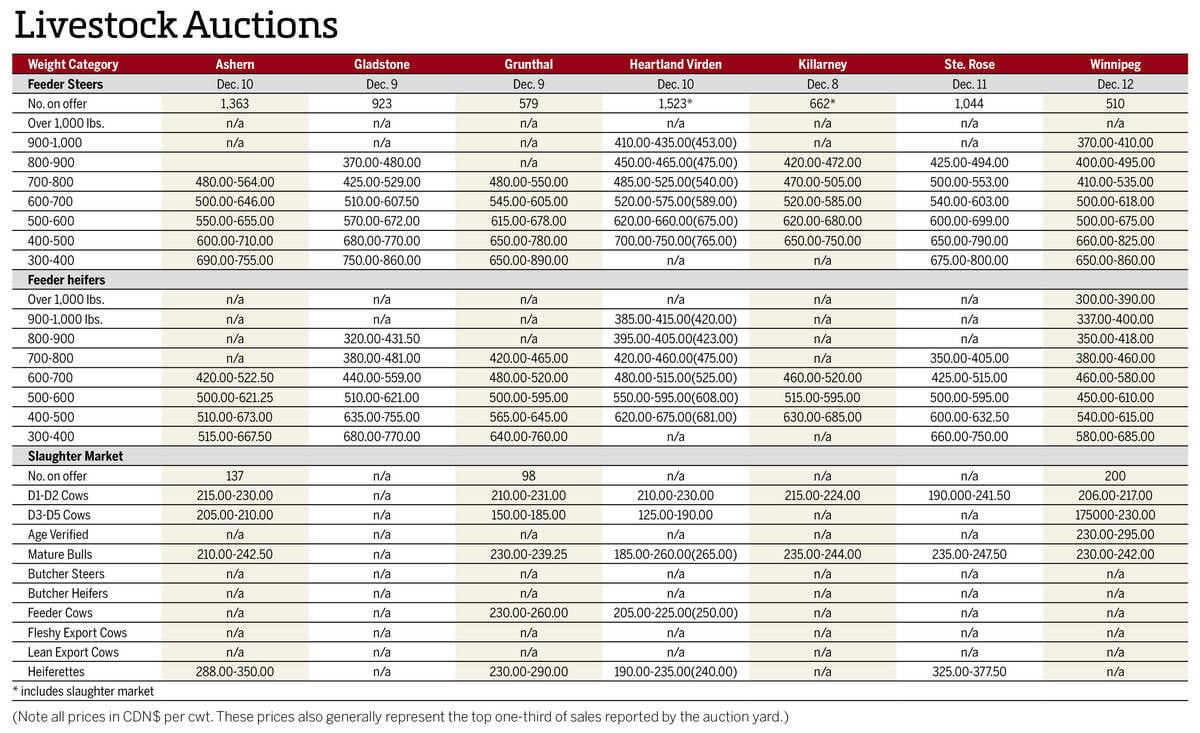The Canadian dollar has fallen to its weakest level since spring 2020, during the early days of the pandemic, and the downtrend shows no signs of easing.
The currency traded above 74 U.S. cents to start October but lost two cents over the month and fell further after the U.S. election. The loonie was trading around 71 U.S. cents on Nov. 15.
Policies proposed by Donald Trump, and ideas that interest rate policies between the U.S. and Canada may diverge, accounted for much of the weakness in the loonie. The U.S. dollar index gained ground against most international currencies.
Read Also

Manitoba cattle prices Dec. 16
Here’s what local farmers were getting paid last week for their cattle at Manitoba livestock auction marts; prices covering the week Dec. 8-12, 2025.
With the Canadian dollar below key chart points, many currency strategists altered their outlooks to call for additional weakness. The Bank of Canada is widely expected to continue cutting interest rates, while the U.S. could slow its own pace of cuts under the Trump administration.
Diverging interest rate policies will encourage investors to move more money into the U.S. dollar at the expense of the loonie and other international currencies. Activity in crude oil and Canadian economic data will also come into play in setting the loonie’s direction.
A weaker Canadian dollar is typically seen as supportive for Canadian grain and oilseed markets, but the overall impact is likely more mixed.
Canola crush margins have improved slightly over the past month, but at $135 per tonne over the nearby futures, that’s only up by $10 and about $100 below the margins seen at the same time a year ago when the Canadian dollar was trading around 73 U.S. cents.
The softer currency makes exports more attractive for anyone buying with U.S. dollars. However, with most other currencies also dropping relative to the U.S. dollar, the extent of any benefit may be muted. Imported inputs also become more expensive.















